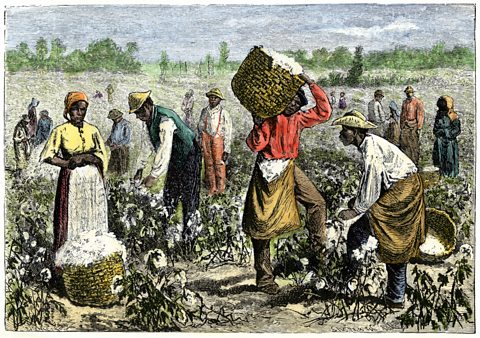Slave life on Southern plantations
Life in the Southern plantations was often terrible. The treatment of enslaved people could be very harsh.
- enslaved people were not regarded as people but as property
- some enslaved people were treated well by their owners but many were abused and treated badly
- some worked in the homes of their owners but most worked outside in the fields cultivating crops like sugar, cotton and tobacco

Enslaved people picking cotton in the South
- enslaved people were seen as the property of the owner to do with as he wished. Enslaved people could be killed or raped without consequence.
- they worked long hours in the fields often in very high temperatures
- accommodation was very basic. Simple wooden huts with earth floors
- very harsh punishments: neck rings, beatings, amputation of feet if caught running away, tread mills
- enslaved people could be sold away from their families
- no leaving the plantations without a pass
- basic food rations
In 1853 Harriet Beecher Stowe published the novel Uncle Tom’s Cabin. It clearly described how enslaved people were treated and many people in the North were shocked. Many joined or supported Abolitionist groupsA group of people who favour the abolition of a practice or institution, especially capital punishment or (formerly) slavery. that tried to help enslaved people who had fled captivity, and campaigned to abolish slavery.
Life on a plantation